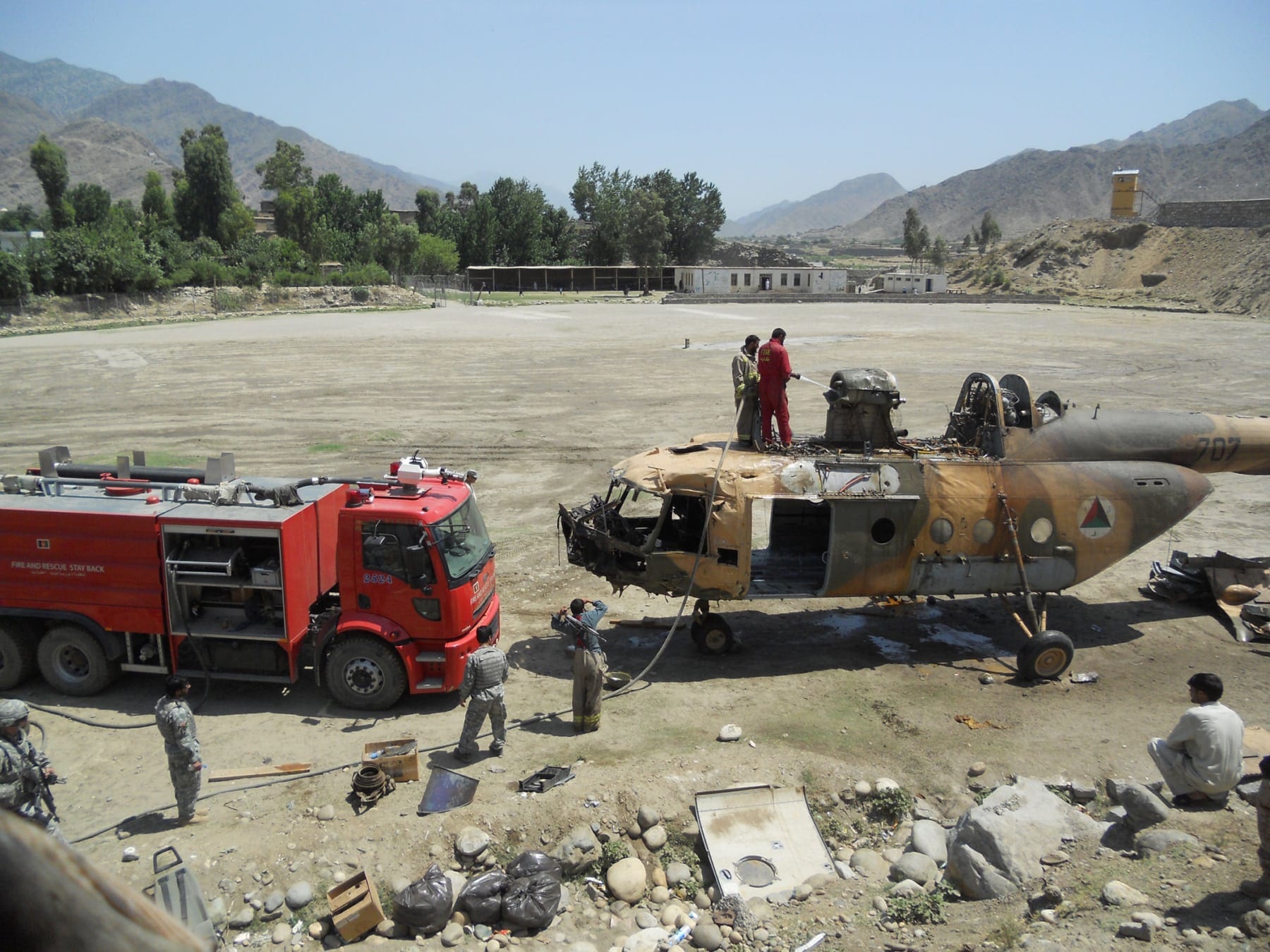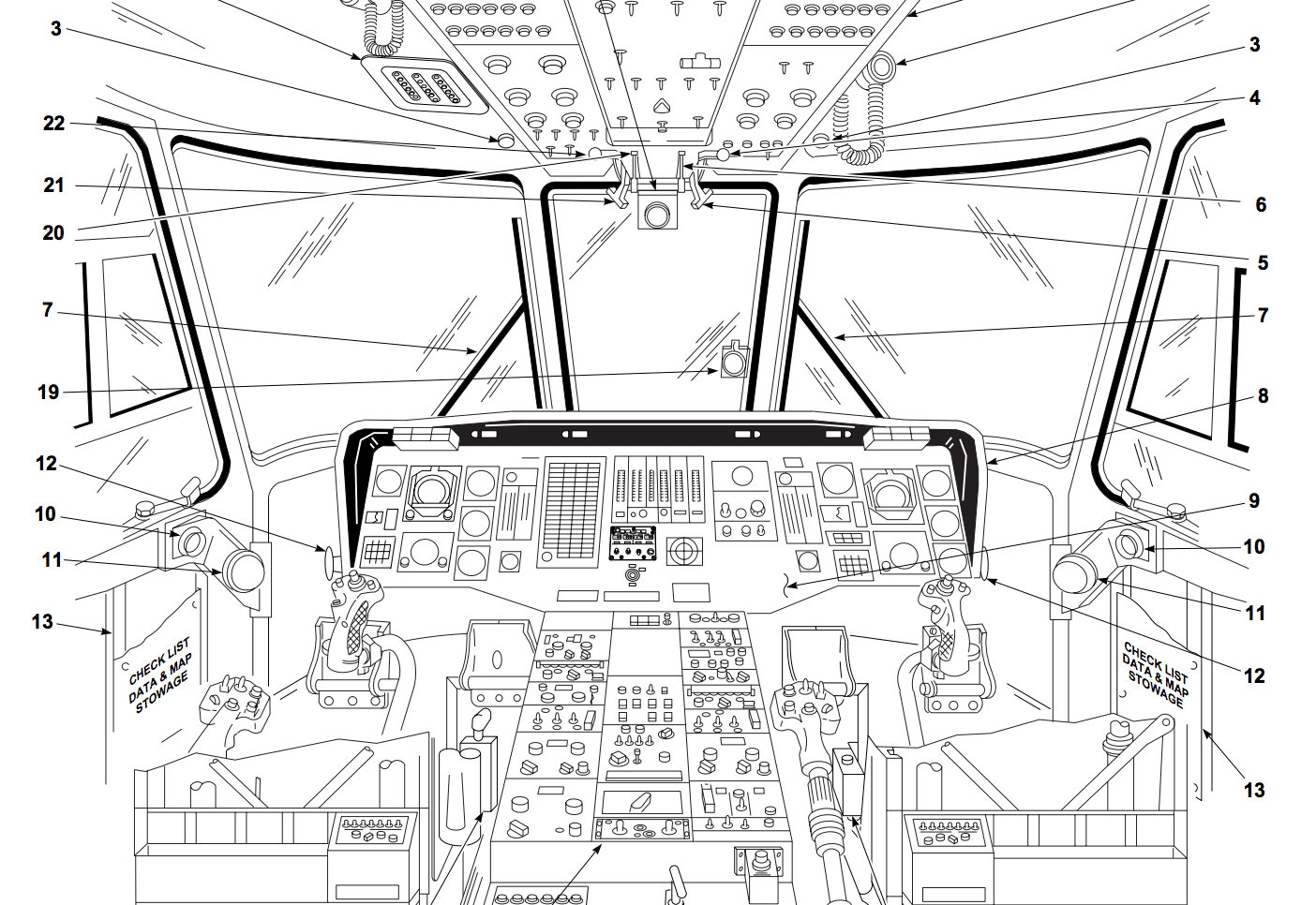After then President Hamid Karzai declared Afghanistan’s Air Force ‘reborn’ in 2008, NATO poured money and equipment into the country. However, the initiatives have consistently fallen flat, and the US should think twice about a Blackhawk helicopter program it may never finish.
In a big move to modernize the fledgling Afghan Air Force (AAF), the US Military announced in 2017 that it was going to gift the AAF 4 refurbished UH-60 Blackhawk helicopters. Since then, they were given 9 more, bringing the total up to 13. Over the next six to eight years the US plans to unload 160 of them on the AAF.
Until recently none of the helicopters had flown.
On May 10th, U.S. Central Command (CENTCOM) announced that AAF UH-60 Blackhawk crews conducted their first operational mission in Helmand Province, on May 8th. The mission took place the day after the first 31 AAF members graduated from mission qualification training, making them the first fully-qualified UH-60 Blackhawk Afghan air crews.
#Afghan Air Force conducts first UH-60 #BlackHawk operational mission @ResoluteSupport #AFG https://t.co/F2Z8uYK3W4
— U.S. Central Command (@CENTCOM) May 11, 2018
According to the CENTCOM statement, AAF commander Maj. Gen. Mohammad Shoaib believes the Blackhawks “are ideal for Afghanistan because they are suitable for the terrain and weather, and they possess more modern technology.”
https://twitter.com/ResoluteSupport/status/993524767226580998
This is the rebirth of the Afghan air force. God has been kind to us again and has blessed us with the rebirth of the air force.
-Afghan President Hamid Karzai, 2008
As the Taliban spring offensive is in full swing, attacks have intensified. Just last month, in an attempt to target Taliban leaders, Afghan Air Force helicopters struck an open-air religious gathering killing 30 children and wounding 51 more. Yesterday, in an attempt to prevent the fall of the city of Farah, Afghanistan to an assault by Taliban forces, US Air Force A-10 Warthogs had to be dispatched. Just over a decade after the AAF was announced as ‘reborn’ by former Afghan President Hamid Karzai, serious questions remain whether the AAF is capable of recruiting, training, and fielding proficient pilots for aircraft such as the new UH-60 Blackhawks. This is a process that can take the US military, one significantly better prepared for the task, more than a year.
https://twitter.com/MoDAfghanistan/status/996643879788122112
As the AAF doesn’t have a good track record of force readiness, its statements that it is up to task should be taken with a grain of salt. All of the AAF’s airframes, with the exception of the Blackhawks, are several generations removed from being anything remotely new. Older airframes require constant maintenance, something the AAF has shown time and again they are simply not capable of doing.
The Mi-35 Hind multi-use helicopter, originally of Soviet origins, was supposed to be the AAF’s attack helicopter of choice. Four were donated by the Czech Republic as a part of the Afghan National Army Donation Program. Polish and German pilots trained Afghan crews in an attempt to field an attack helicopter force that would be able to fly escort and support missions. According to a report by the Special Inspector General of Afghanistan Reconstruction (SIGAR), none of them are functional.
![Image Mi-35 Hind helicopter [Photo: Angelita Lawrence, U.S. Air Force]](https://limacharlienews.com/wp-content/uploads/2018/05/Mi-35-HIND-helicopter.jpg)
The Mi-17 Hip, was planned to be used for supply and medical evacuations. That capacity has never fully developed. Instead, logistical nightmares of a lack of replacement parts and an incredibly high demand grounded 24 of their 47 airframes. This has badly hamstrung the medical evacuation of wounded Afghan Army Soldiers, leading to an average of a 19 day wait for evacuation in some parts of the country.
![Image An Afghan national army air corps MI-17 takes off past an AN-26 at the Kabul Air Base, Afghanistan [Image: Petty Officer 1st Class David M. Votroubek, US Navy].](https://limacharlienews.com/wp-content/uploads/2018/05/Afghan_MI-17_and_AN-26.jpg)
The AAF reported to SIGAR that they had a fleet of 20 A-29s and 30 trained pilots. SIGAR found that in actuality, only 12 are in Afghanistan, with 1 being unusable because of damage. The rest are at Moody Air Force base, Georgia for pilot training. One was recently totally destroyed in a training accident.

Most modern air forces have a heavy airlift capability, and in the rugged mountains of Afghanistan this will become hugely important if ISAF is to ever stop its involvement in active operations. The US attempted to prop this wing up in 2014 when it donated 16 G222 military cargo planes at the cost of nearly half a billion dollars.
The G222 is a medium sized transport of Italian origin originally produced in the 1970s for NATO. The Department of Defense shipped the fleet to Afghanistan where, according to former SIGAR Chief John Sopko, the fleet sat “parked and unused on a tarmac at Kabul International Airport.” The DoD found that the G222’s project management office and NATO’s training mission command “did not properly manage the effort to obtain the spare parts needed to keep the aircraft flightworthy.” As a result, the entire fleet of aircraft only logged 243 hours of the 4,500 required to train the selected pilots.
The half billion dollar project was eventually broken down and sold to an Afghan construction company for 6 cents a pound. Or, a total of $32,000.
![Image G222 [Photo: Giorgio Adamo]](https://limacharlienews.com/wp-content/uploads/2018/05/G.222-plane.jpg)
Over the next six to eight years the US plans to unload 160 UH-60 Blackhawk helicopters on the AAF.
So why is the US Military giving another Airframe to the AAF, with its terrible track record, and an Airframe that is so obviously not suited to their needs?
It would be significantly cheaper and easier to continue arming and training the AAF with refurbished Soviet Bloc / FSU weapons. The AAF has a history of using FSU equipment, including having several fighter pilots trained before the fall of the pro-Soviet Najibullah Government. It also has the infrastructure in place to continue training maintained crews. While the progress of training ground crews has been incredibly slow, it has still gotten better from one SIGAR report to the next since the creation of the AAF. Attempting to create an entirely new infrastructure for an airframe they’re completely unfamiliar with would be a step backwards.
Yet, oddly enough such a strange move is in sync with other developments within the Afghan Security Forces. The rush to modernize a force that hardly exists at all and can hardly secure its own capital, let alone take charge of offensive capabilities, is almost expected.
Meanwhile, the US continues to attempt to build the Afghan National Security Forces in its own image. It encouraged interoperability with combat enablers and multipliers like integrated supporting fire, close air support, medical evacuation, intelligence, and reconnaissance that were “largely underdeveloped, or nonexistent within the ANSF at the time,” according to the 2017 SIGAR report. General John Campbell, a former Commander of US and NATO missions in Afghanistan testified in Congress that, “One of the greatest tactical challenges for the ANSF has been overcoming the AAF’s extremely limited organic close air support capability.” Adding new systems will surely complicate the situation further than it already is.
The decision seems more political than practical.
In 2013, President Obama cancelled a Mi-17 purchase from Russia in response to Russian action in Syria. Further cancellations were made in response to Russian interference in Ukraine. This matched the slow transition of the ANSF’s transition away from Soviet Bloc small arms towards the NATO standard. The US made the claim that it would make the supply situation much easier, though they did not seem to have an issue with it in the preceding decade.
In an attempt to limit Russian influence on the ANSF, and secure a future source of revenue for arms sales in a war with no end in sight, the U.S. is shooting ANSF in the foot. Even if the US couldn’t bring itself to buy Soviet-era systems from Russian, undoubtedly state-owned, companies, there are countless third country sources they could be derived from instead. Sources they have used before in the past.

The US has spent the last several years attempting to get the AAF’s Mi-17 fleet fully operational, both on the ground and in the air. It has run into multiple issues, mostly stemming from recruitment and retention of personnel. Until very recently the AAF got most of its recruits from the Afghan Army because the Army would teach new recruits how to read, a requirement for the AAF. In a country with a 31% adult literacy rate, this requirement has been a major roadblock .
Now, when the AAF is finally showing some movement in the right direction, the US is effectively throwing its hands up and starting over. The AAF’s Mi-17 fleet is to be scrapped and replaced with the UH-60s just over a decade after Karzai’s ‘reborn’ announcement.
The problem is that the UH-60 is a significantly more complicated airframe, with less carrying capacity than the Mi-17, and one the Afghans have little experience flying or maintaining.
According to the Afghan Aviation Transition Plan (AATP) the organization spearheading the modernization of the AAF, “Afghan crews plan, manage, and execute all aspects of routine flying and maintenance operations on the Hip.” It is hard to imagine that the AAF crews will get anything remotely close to that level of proficiency on the UH-60 any time soon, severely hampering the future independence of the AAF. In the meantime, maintenance on their new UH-60s will have to be conducted by contractors which will undoubtedly be paid for by the US Government.

This seems like it would be an effective stopgap until AAF ground crews could be caught up to speed. Yet history says otherwise. A Mi-17 crashed in Kabul in 2012 while on a Ministry of Interior counter-narcotics mission. A Northrop Grumman contractor was the pilot in command, with an Afghan as co-pilot. The maintenance on the Mi-17 in question was done by DynCorp, a massive military contractor.
Somewhat hilariously, the Pentagon believes that training current Mi-17 pilots will be incredibly easy, estimating that it will only take up to 12 weeks. That assumption was mocked by independent researcher Matthew Archibald who said, “There is just no way it’s going to be a smooth transition. Show me any kind of operation where there was a smooth transition in Afghanistan in the past 16 years.”
So how realistic is NATO’s current five-year self sustainability plan for the AAF?
Surely transitioning to a streamlined NATO Airframe will only speed up the process. To quote the Deputy Commander of the NATO Train Advise Assist Command-Air, the unit taking the lead on the training of the AAF:
“If we got new aircraft, we would have to update that five-year plan. It might take six, seven, eight years.”
It should come as no surprise that President Trump recently scrapped all plans for a US exit out of the Afghanistan Forever War.
Joe Kassabian, Lima Charlie News
[Anthony A. LoPresti contributed to this report]
Joe Kassabian is a veteran of the US Army, serving for seven years as a 19K and is a published Author. He has worked extensively in the Middle East, Europe, and South Asia training and advising national security forces. He studied Communications and Journalism in Texas before relocating to the Seattle area. His first book, a memoir of his last year in Afghanistan, The Hooligans of Kandahar, is available now in paperback and ebook. Follow Joe on Twitter @jkass99
Lima Charlie provides global news, insight & analysis by military veterans and service members Worldwide.
For up-to-date news, please follow us on twitter at @LimaCharlieNews
[Title Image: An Afghan man next to a Black Hawk helicopter, after a handover ceremony of Blackhawk helicopters from US to the Afghan forces, Kandahar air base, Afghanistan, October 7, 2017. (Reuters/Omar Sobhan)]
In case you missed it:

![Image Giving the Afghan Air Force Blackhawks is a terrible idea [Lima Charlie News]](https://limacharlienews.com/wp-content/uploads/2018/05/Afghanistan-Black-Hawk-Helocopters-.jpg)



![Image Strike a deal with which devil? The many faces of the Taliban [Lima Charlie News][Image: Anthony A. LoPresti]](https://limacharlienews.com/wp-content/uploads/2019/03/Many-faces-of-the-Taliban-Lima-Charlie-News-Anthony-LoPresti-480x384.png)
![Image The fate of Afghanistan’s NATO Generation [Lima Charlie World][Photo: Shamsia Hassani]](https://limacharlienews.com/wp-content/uploads/2019/03/The-fate-of-Afghanistan’s-NATO-Generation-Lima-Charlie-World-Shamsia-Hassani-480x384.png)
![Image Afghanistan – A Bold Solution [Lima Charlie News]](https://limacharlienews.com/wp-content/uploads/2018/12/Afghanistan-A-Bold-Solution-Lima-Charlie-News-480x384.png)


![Blossoming Russo-Turkish alliance leaves U.S., NATO behind [Lima Charlie News]](https://limacharlienews.com/wp-content/uploads/2019/07/Russia-Turkey-alliance-leaves-U.S.-NATO-behind-480x384.png)


![Image Strike a deal with which devil? The many faces of the Taliban [Lima Charlie News][Image: Anthony A. LoPresti]](https://limacharlienews.com/wp-content/uploads/2019/03/Many-faces-of-the-Taliban-Lima-Charlie-News-Anthony-LoPresti-150x100.png)
![Image The fate of Afghanistan’s NATO Generation [Lima Charlie World][Photo: Shamsia Hassani]](https://limacharlienews.com/wp-content/uploads/2019/03/The-fate-of-Afghanistan’s-NATO-Generation-Lima-Charlie-World-Shamsia-Hassani-150x100.png)